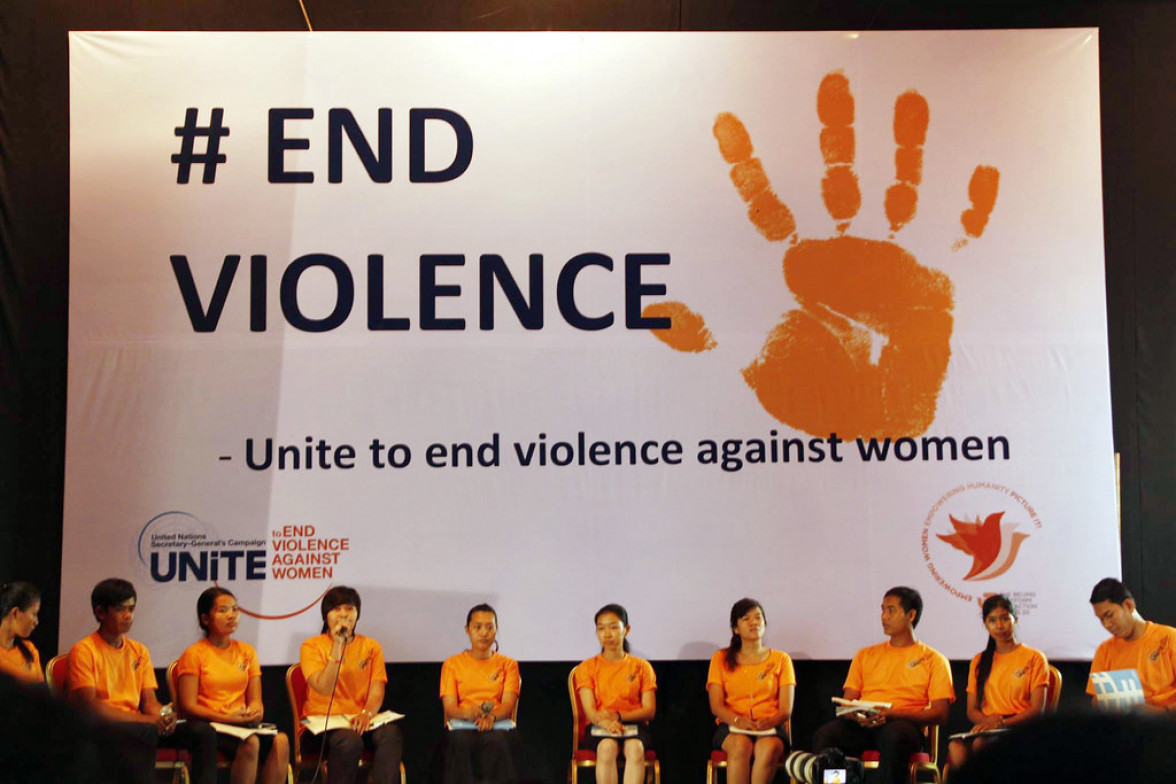
What We Can Do to Eliminate Online Violence Against Women and Girls

Written by: Vanly Keomuda, a 4th year student majoring in International Studies at The Royal University of Phnom Penh
Edited by: Sao Phal Niseiy, Editor-in-Chief at The Cambodianess and Deputy Editor-in-Chief at Thmey Thmey News

(Photo credit: "#orangeurhood Cambodia" by UN Women Gallery is licensed under CC BY-NC-ND 2.0)
The emergence of information and communication technology (ICT) tools such as the internet and social media platforms has opened up new social and economic opportunities and changed the way people interact and communicate. As the internet space has grown, its usage has moved beyond serving our daily interaction to becoming an advocacy platform as it can provide the space for women to express themselves and seek new opportunities. Although the internet presence offers new possibilities, when people use it with limited literacy and ethical standard, it could serve as a double-edged sword that can cause harm and exacerbate online violence against women and girls (VAWG) alike.
What is online violence against women?
There is no single uniform definition for online VAWG, but the United Nations’ report of the special rapporteur on violence against women defines online VAWG refers as “any act of gender-based violence against women committed, assisted or aggravated in part or fully by the use of ICT, such as mobile phones and smartphones, the Internet, social media platforms or email, against a woman because she is a woman, or affects women disproportionately.”
In short, online VAWG refers to any act of violence against women and girls perpetrated in part or fully through ICT. Actually, online violence against women is different from other forms of violence against women because the perpetrators can carry it out anonymously without being punished. Moreover, they can conduct the act of violence without any physical barrier or requiring much time and effort. Therefore, it becomes harder to control online VAWG, and it causes more harm to women and girls.
Regarding online harassment, there is still a lack of comprehensive data on violence against women online. But, the majority of the available studies have shown that women are more vulnerable to online violence than men. The Economist Intelligence Unit (EIU)'s survey in 2020 shows that 85% of women have experienced or witnessed online VAWG, in which 38% have reported personal experience while 65% others reported knowing other women targeted online.
In addition, the predominant tactics of online threats against women include misinformation and defamation (67%), cyber harassment (66%), hate speech (65%), impersonation (63%), hacking and stalking (63%), astroturfing (58%), video and image-based abuse (57%), doxing (55%), and violent threats (52%). During the COVID-19 pandemic, a report indicates that there have been emerging trends in online violence against women as people have been spending more time online and on digital devices.
As a part of the globalized world, Cambodia is not exempt from this negative phenomenon. Unfortunately, the study and data on online VAWG remain limited and understudied. According to a study by LIRNEasia in 2018, up to 29 percent of Cambodian female internet users aged 15-65 have experienced online harassment compared to 23% of their male counterparts. They have experienced it in the form of being cyberstalked (67%), being called offensive names (14%), being sexually harassed (1%), being purposefully embarrassed or criticized in another way besides being described offensive names (17%), and being physically threatened (2%).
Even with the high percentage of prevalent online VAWG, the issue remains overlooked, and most cases continue to be unreported. The result from the EIU study revealed that only 1 in 4 women spoke of violent behavior on online platforms while only 14% of them reported the issue to an offline protective agency and 78% percent of respondents said that women are unaware of the options to report harmful online behaviors. Besides being underreported, law enforcement agencies and courts often fail to take appropriate corrective actions to address the online VAWG issue.
Why does online VAWG matter?
While many consider that the online space can enhance inclusive opportunity and the voice to promote their freedom of expression, the online VAWG instead hinders such possibility, prompting women to miss out on the benefits that the internet space has to provide. In essence, the impact of online VAWG is generating psychological, social, and economic effects for women in particular.
In terms of psychological and social impact, a study by UN women revealed that women experiencing acts of online violence would have higher levels of anxiety, stress disorders, depression, trauma, panic attacks, loss of self-esteem, a sense of powerlessness in their ability to respond to the abuse, and in some cases, the victims may also develop suicidal tendencies.
Furthermore, online VAWG could also result in physical harm to women and encourage women to exclude themselves socially. According to the EIU study, up to 10% of women enduring online violence reported that they experienced offline physical abuse because of the exposure of some of their private information.
As for economic harm, online VAWG could also force women to go offline or restrict their online presence, resulting in a larger gender digital divide and limiting their ability to access new opportunities like employment, education, healthcare, and community. Around 20% of the women in the EIU survey said that they stop using online platforms, while in Cambodia, 11% said that they would reduce the use of the website where they experienced online violence. Some of the cyber violence, including explicit images of the victim, could also cause employment loss or difficulties in seeking employment for women. On top of individual impact, online VAWG could also have a macro-economic reverberation as it links to the loss of income of women.
What can we all do to help?
Because of the nature of the online space that is timeless, anonymous, and borderless, online VAWG causes serious harm to women and exacerbates gender inequality; therefore, dealing with the issue requires the involvement and commitment of everyone. The best practice recommended by the Broadband Commission Working Group on Gender concentrates on 3Ss--sensitization, safeguards, and sanctions in mitigating online VAWG.
First, sensitizations refer to preventive measures that aim to change social attitudes and norms through awareness-raising and a deeper understanding of online abuse against women. This measure could be done through public awareness campaigns, providing training on cyber-security and cyber violence against women, and integrating online ethical standards as part of the formal education in the country. We can achieve sensitization only when there is close cooperation and active involvement from governments, civil society groups, private sectors and the general public. Governments and civil society organizations should warrant a commitment to improving public education on online VAWG. Meanwhile, the private sector and the public should maintain the responsibility to monitor their online behavior.
Second, safeguards require oversight and monitoring measures that can keep up with the evolving and scope of the online space. This mechanism necessitates closer attention of the government, civil society organizations and the internet industry to maintain responsible and ethical standards for online behavior. In addition, they also have to develop technical solutions that encourage and facilitate reporting of the abuse.
Third, sanctions involve the adoption and utilization of laws and regulations on cyber violence against women. It demands that governments adopt particular rules, regulations and other governing tools while ensuring vigorous and effective implementation, enabling the process of addressing the problems of online VAWG to be carried out promptly.
Considering everything, as countries have been going through digital adoption and adaptation, online violence against women and girls needs more attention and actions from all stakeholders. Hence, women would not be left behind but, instead, could reap more benefits that ICT has to offer.
To learn more about online violence against women, please visit the below links:
- Online and ICT facilitated violence against women and girls during COVID-19
- Report of the Special Rapporteur on violence against women, its causes and consequences on online violence against women and girls from a human rights perspective
- Online violence against women in Asia: a multicountry study
*This blog is produced with the financial support from the European Union and The Swedish International Development Cooperation Agency through Transparency International Cambodia and ActionAid Cambodia. Its contents do not reflect the views of any donors.




